Our radio lifeline to outer space took shape as a temporary, manually run network of dishes. The Deep Space Network has since expanded, communicating the data and images coming from spacecraft traversing the solar system.
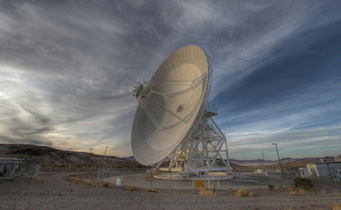
For 50 years, NASA's Deep Space Network has served as the lifeline to explorers of deep space and the pipeline for all of the stunning images and data those spacecraft send back to us. A network of dishes, like this one at the complex in Goldstone, California, send signals or listen to signals 24 hours a day, seven days a week, 365 days a year.
NASA / JPL-Caltech
Communications technology has shrunk our globe: first telegraphs, then telephones, now nearly instantaneous wireless communications have made it easy to connect with people a world away. We’ve grown so used to instant communication that we don’t often think about the fact that these networks end with our planet. There’s no telegraph in space, much less wi-fi. So how can we can talk with the probes and rovers that traverse much of our solar system?
We communicate with our interplanetary (and even interstellar) ambassadors using NASA's Deep Space Network, which turned 50 this past Christmas Eve. The network took shape in the 1950s as the U.S. Army’s Deep Space Instrumentation Facility (DSIF), originally consisting of three stations in Goldstone, California, Woomera, Australia, and Johannesburg, South Africa. Each station received and transmitted signals using an 85.3-foot dish, processing telemetry from some of the nation’s earliest spacecraft. They talked to one another and to the mission coordination center at NASA’s Jet Propulsion Laboratory by telephone and teletype systems, using undersea cables, landlines, and high frequency radio links.
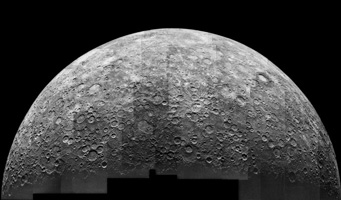
NASA's Mariner 10 spacecraft was the first to visit Mercury, flying past at close range three times in 1974 and 1975. This mosaic is made up of images taken 125,000 miles (201,000 km) from the planet.
NASA / JPL-Caltech
At the heart of the DSIF was the Space Flight Operations Facility (SFOF), a hastily designed control center meant to manage NASA’s early Ranger missions to the Moon and Mariner missions to Venus and Mars. It was a temporary and manually run facility that saw technicians communicating over simple phone lines and posting the latest mission updates on the wall with pushpins or taking notes on blackboards. But it was clear to NASA and JPL management that more complicated and far flung missions would need an upgraded SFOF with a more sophisticated tracking station to match.
On December 24, 1963, JPL director William H. Pickering redefined the DSIF’s responsibilities, and in a single letter he began the Space Flight Operations Facility transformation into the modern-day Deep Space Network.
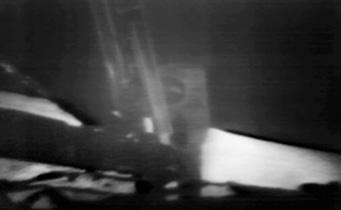
NASA's Deep Space Network received and relayed to the world the first TV images of astronaut Neil Armstrong setting foot on the surface of the moon in July 1969. This is a still frame from NASA's movie.
NASA
This transformation brought several changes that improved and expanded the network. One of the first was the change in communication frequency from 960 MHz to 2,200 MHz (megahertz). The lower frequency lies on what's known as the L band, which early space probes such as the Ranger missions used for communication. But higher frequencies such as 2,200 MHz, which lies in the S band, improve spacecraft communications by allowing more data and information to be passed from spacecraft to receiving station at once.
At the time that Pickering established the DSN, amplifiers and transmitters operating in the S-band were already available, but the final four Ranger missions to the Moon and the first two Mariner missions to Venus still used the L-band system. So engineers temporary installed S-band conversion equipment parallel to the L-band systems, allowing the network to support the final L-band missions. Once those missions were completed, the stations switched exclusively to S-band communications.
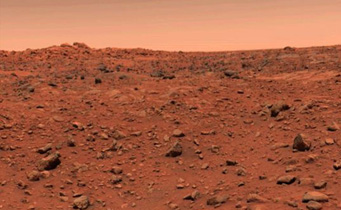
NASA's Viking 1 was the first spacecraft to touch down safely on Mars. This color picture was taken July 21, 1976 — one day after landing on the planet.
NASA / JPL-Caltech
Other changes involved replacing the crystal controlled oscillators with atomic clocks for increased accuracy in navigation. And improvements to NASA’s ground communications (NASCOM) led to a system that connected all NASA sites and centers. This means that resources could be diverted when JPL needed to track a mission and reverted in support of other NASA activities. The control center of the upgraded Space Flight Operations Facility armed with elaborate communications systems was where engineers monitored, coordinated, and managed all incoming and outgoing data that ran through the station 24 hours a day.
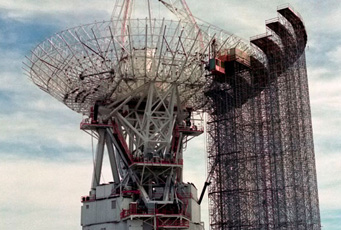
In anticipation of the upcoming flyby of Neptune by NASA's Voyager 2 spacecraft in 1989, NASA's Deep Space Network upgraded the giant antenna at the Goldstone complex known as DSS-14. This antenna was expanded from 210 feet (64 meters) across to 230 feet (70 meters) across in order to pick up Voyager's faraway signal with more accuracy. This image was taken on December 12, 1987.
NASA / JPL-Caltech
As NASA missions expanded, so did the DSN. In the 1960s, the Lunar Orbiter and Surveyor missions, which paved the way for the Apollo flights that would land on the Moon, were more complex spacecraft that demanded correspondingly faster and more sophisticated communications systems and displays. Studies showed that a nearly 210-foot antenna was the largest practical size for a receiving and transmitting station, and the first such dish was erected at the Goldstone site in 1964. As NASA launched an increasing number of deep space probes, more stations were added to the DSN to help manage multiple simultaneous missions: one at Robledo, about 40 miles west of Madrid in Spain, and one in Tidbinbilla, about 10 miles from Canberra, Australia. The DSN became the primary way to determine distance to the ever farther flying spacecraft, incorporating multiple data points for precise distance measurements.
Since its inception 50 years ago this past Christmas Eve, the DSN has communicated with almost every mission that has gone to the Moon or beyond, receiving everything from the first words men spoke on the Moon to the data stream from Voyager 1 as it passed into interstellar space. Today, the network supports more than 30 international deep space missions. The DSN’s critical role in spaceflight is reflected in its motto: “Don’t leave Earth without us.”
See image galleries, videos, and more at NASA's celebration of DSN's 50th anniversary.
Amy Shira Teitel is a spaceflight historian and freelance writer. She contributes regularly to Scientific American, Al Jazeera English, and Discovery News, among others, and maintains her own blog, Vintage Space.
 0
0
Comments
You must be logged in to post a comment.